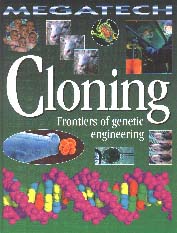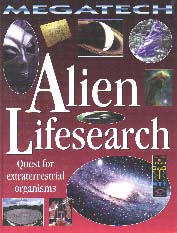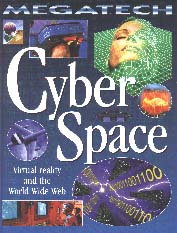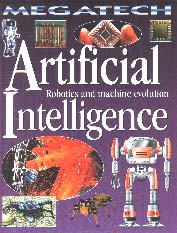|
________________
CM . . . .
Volume VII Number 3 . . . . October 6, 2000
excerpt: from Cloning: Frontiers of Genetic EngineeringThe processes of planetary evolution may have taken billions of years. However, as this outstanding series explains, humanity is living within revolutions in many fields: the biological and physical sciences, computer science, artificial intelligence and robotics. Children growing into adulthood over the next few decades will encounter quantum changes in their lives that potentially dwarf the nineteenth and twentieth century's great scientific leaps. There is no putting the genie back into its bottle, but, as in all human endeavors, it is our decision how the gifts it offers will be used. The moral consequences of scientific discovery are not the focus of the Megatech books, however. Their purpose is to demystify the latest science and technology that we read about in the daily newspapers and weekly periodicals; see on television and at the movie theatre; experience on home and school computers; attempt to convey in classrooms and, perhaps, even dream about in our personal visions of the future. Each of the four books in the series follows a similar pattern. They begin with a historical overview of the subject area's development; offer an examination of the science's current state; finally, they explore what the future may hold, given the remarkable advances being made in these fields. The photographs and diagrams complementing the text are extraordinary in quality and quantity. Every book has a glossary of technical terms and concepts and a "Time Track" of historically significant events in the development of the technology. These aids will also be valuable to students. Although the text is replete with complex scientific concepts and language, it is teacher and student friendly. The readability and intelligibility level is extremely high. Consequently, any student interested in cutting edge scientific and technological advances will be intrigued by this series. All the books are of an equally high quality and would be a significant addition to an elementary or middle school library. Highly recommended. Ian Stewart lives in Winnipeg, MB, and is a regular contributor to CM and the book review pages of the Winnipeg Free Press.
To comment on this title or this review, send mail to cm@umanitoba.ca.
Copyright © the Manitoba Library Association.
Reproduction for personal use is permitted only if this copyright notice
is maintained. Any other reproduction is prohibited without
permission.
Published by
TABLE OF CONTENTS FOR THIS ISSUE - October 6, 2000.
AUTHORS |
TITLES |
MEDIA REVIEWS |
PROFILES |
BACK ISSUES |
SEARCH |
ORDER |
CMARCHIVE |
HOME
|



